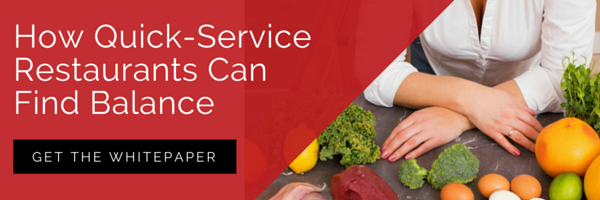
The speed with which the food sustainability movement captured the attention of consumers surely took many in the fast food industry by surprise and left not a few supply chain managers scrambling.
As Tove Danovich aptly wrote in Eater, “Not too long ago, people who identified as ‘vegetarian’ in the United States were often met with cockeyed stares and questions like, ‘but you can eat chicken, right?’ Animal welfare was a term applied to dogs and cats — not farm animals.”
Formerly niche food categories — all organic, cruelty-free, sustainably raised, non-GMO, gluten-free — quickly rose to the forefront of American consumer consciousness. Some of that may be attributable to Millennials’ coming of age, but is all of it?
Most likely not.
The Internet changed the game for QSR companies.
Consumers have become increasingly concerned about their health, so they’ve been scrutinizing ingredient lists. And as they have, they’re encountered unfamiliar words. They’ve turned to the Internet to search ingredients and learn about how their favorite foods are produced.
And they haven’t always liked what they’ve found: Factory farming. Tiny cages. Growth hormones. “Pink slime.” Beef with fillers.
Consumers have more access to information, and they’re no longer willing to accept food safety claims at face value. Nutrition and food safety claims that used to be made by people on the fringe suddenly seemed more plausible. Many QSR companies found themselves suddenly on the defensive.
Consumers are grading fast food companies on transparency and supply chain sustainability. And they’re sharing those grades with their peers.
Sustainably produced goods often come with a higher price point in the market. One might expect, then, that fast food consumers (traditionally budget conscious) might be leery to substitute toward them.
But we seem to have a market that increasingly views sustainably produced goods as those that are (in microeconomic terms) normal and goods produced by traditional means as those that are inferior.
A case in point: Nielsen found last year that, for brands committed to sustainability, global sales rose by 4 percent, whereas sales by brands that had made no public commitment to sustainability rose only 1 percent. This would indicate that consumers are willing to share their foot of the bill for a more sustainable, cleaner, healthier world. And they’re asking their peers to join them in footing that bill.
According to a consumer survey by Asia Pulp and Paper, over half of American consumers reported being more likely to recommend a product to friends and family if that product includes information on the sustainable practices used to produce it.
Although the survey specifically focused on fast food packaging, the lesson is transferrable to fast food itself. Consumers want the fast food industry to deliver healthy, sustainable food at reasonable — not necessarily rock bottom — prices. There’s most likely pricing room for your company to engage them.
Grade yourself before they grade you.
How can QSR companies figure out where they stand on sustainability relative to their competition? In this market, it’s essential for companies to know how they stack up, so that they can take action and control the consumer narrative.
For example, if your company currently lags behind its competitors in fielding sustainable menu items — but knows it — you can develop a brand story that shows consumers what you are doing to eventually meet their expectations. Or, if your supply chain is somewhat middle of the pack in terms of sustainability, you can figure out exploitable niches that you could develop and use to differentiate.
The key is not to try to reinvent your QSR menu and retool your supply chain in one fell swoop. Set small, actionable sustainability goals. Follow through on them, set more, repeat, repeat, repeat.
Momentum can be slow to build in supply chain management, but any progress toward increased sustainability becomes a valuable opportunity for brand storytelling.
And as the inertia drops away, you’ll find fast food consumers flocking in your doors.






